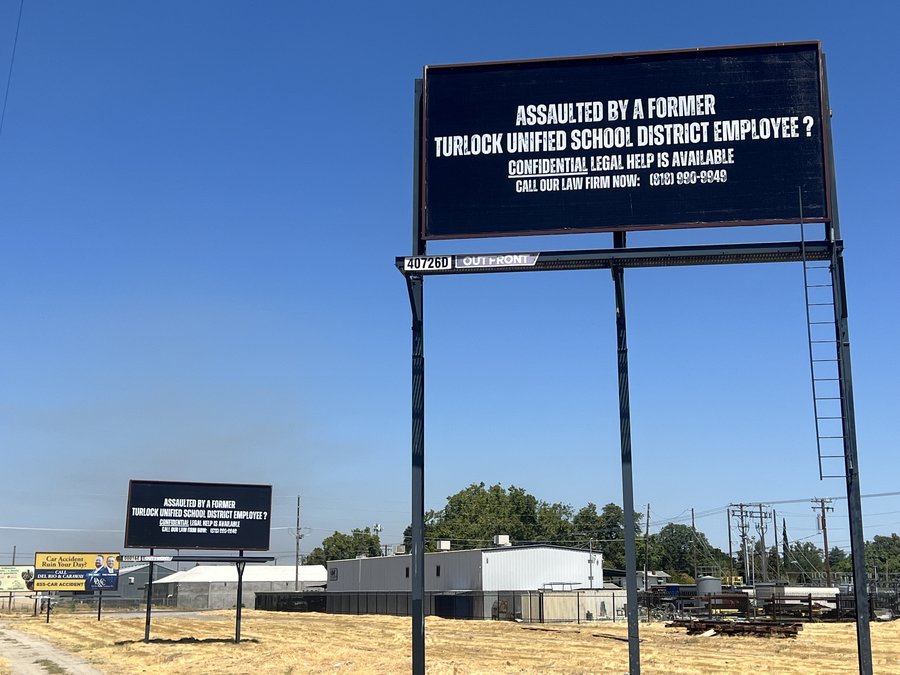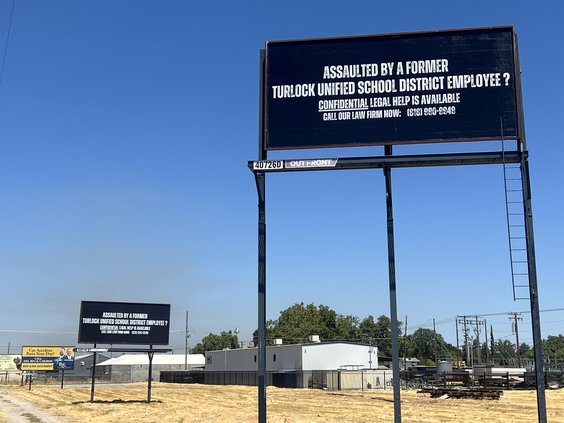On Nov. 11, 1904 the first edition of the Turlock Journal rolled off “the presses” — in this case a single, very small press — and “hit the streets” which in those days were wide and dusty. Unless it was raining, then they were wide and muddy.
At any rate, the Journal’s initial publication, which was a weekly, was born, and, we imagine, was eagerly read by the town’s small population. The only indication we have that it was well accepted is the fact that the Journal has kept right on publishing ever since.
Although the Journal was a pioneer newspaper here, it was not the first to be printed in the community. That honor goes to the old Turlock Times, which D.J. Foley established in 1891, and which folded and moved after the disastrous fire of 1893 that wiped out most of the town’s business district.
Another early newspaper, the Turlock Item, also preceded the Times, but it wasn’t printed — rather it was laboriously handwritten. The editor was Charles J. Deseda, who indicated in the first edition that he had high hopes of turning it into a printed sheet as the town grew. That was in February 1890, and there is no record the Item ever made the printed stage.
A pair of printers, Harry and Jack Randolph, were the founders of the Turlock Journal. They came from the East in the year of 1904, and the first edition was published on Nov. 11.
According to historical notes, the Journal was published for its first two years in a one-story building on East Main Street owned by Horace S. Crane. It is known that the Randolphs moved their printing operation at least once before obtaining property on North First Street.
Though several editors were employed by the paper, it stayed in the hands of the Randolph family until after World War I. In 1910, however, Jack Randolph sold his interest in the Journal to brother Harry Randolph, and went into the telephone business.
Throughout the Randolph years, the Journal remained a weekly publication, except from Aug. 1, 1911 to Nov. 2, 1914, when it was published both daily and weekly. But the daily was discontinued with the explanation that the advertising in the town could not support it.
Following the first World War, Harry Randolph sold out to Edwin Earl Ulberg, proprietor of a printing establishment in Turlock, and the latter immediately changed to a daily. And although Ulberg’s control of the Journal was short-lived, the paper remained a daily from the date he purchased it until 2004.
Ulberg ran into financial difficulties and The Farmer’s Press Association, a cooperative, took over in 1920. The paper was known as the Farmer’s Daily Journal for a long time. Mrs. Josie Goodwin, secretary of the cooperative, acquired controlling interest in the paper and she remained owner and publisher for 13 years.
In December of 1933 another pair of brothers took over the Journal. W. Cliff McDowell and Jack S. McDowell, with financial aid of their mother, Mrs. J. Sherman McDowell, bought the Journal. They had formerly owned and published the Alameda Times-Star.
The Daily Journal under Ulberg was a morning paper but became an afternoon daily under Mrs. Goodwin. Under the McDowells, in 1934, it became both, with the morning edition delivered to the rural area by mail, and the afternoon paper going to city subscribers. After seven years in Turlock, the McDowells sold the Journal to Edward J. and Vera Frayne of New York City. The Fraynes, deciding that the old South First Street Journal building was inadequate for the growing paper, purchased the Hodges Building on the northwest corner of South Center and Crane, its present home.
Soon after the Journal move, however, Frayne, a former nationally known sports writer, suffered a severe heart attack and was forced into retirement. The Fraynes sold the Journal to Mr. and Mrs. Lowell E. Jessen of Holtville, where they owned a weekly newspaper.
The Jessens took over the Journal just two months before Pearl Harbor. World War II saw the death of the morning edition, due to paper rationing.
In February of 1953, Jessen left Turlock to take over operation of the Beverly Hills Citizen, purchased from Will Rogers, Jr. He sold a 49 percent interest to Stanley T. Wilson, publisher of the Mill Valley Record, who then became editor and publisher of the Journal. Wilson later acquired a full 50 percent interest. Meanwhile, the Beverly Hills Citizen was sold and Jessen moved to Livermore, where he consolidated two newspapers into one operation. He sold his operations there in 1960 and retired. In 1963 he was asked by his partner to return to Turlock to equally share publishing responsibility. This he did on April 1.
While publisher and editor of the Journal, Wilson made a large impact on the community. In 1959, Turlock Mayor Ray Carter and 500 other members of the community honored Wilson at a banquet for his part in making Turlock the newest site for a campus in the California State College system. He served on the committee that lobbied for Turlock as the site of the new Stanislaus County area college.
Even before coming to Turlock, Wilson was a force to be reckoned with in the newspaper world. He pushed his agenda for open meeting laws while serving as President of the California Newspaper Publishers Association in 1952, and the year following his term as head of the CNPA, the Ralph M. Brown Act was approved by the state legislature. While this act solely applied to California city and county government agencies, boards, and councils, the Bagleys-Keane Act was later approved by the legislature which required open meetings for state government agencies.
The co-author of this later legislation, former State Assemblyman William T. Bagley of Marin County, established a long friendship with Wilson that lasted until Wilson’s death in 2004. In July of 2005, Bagley wrote that Wilson was “my inspiration (together with Jack Craemer, editor and co-owner of the Marin-IJ) for ‘my’ FOI bills and then for Sigma Delta Chi awards from San Francisco and Los Angeles media. It was the editor of the Mill Valley Record who was part of a crusade in Marin to establish a culture of open government.”
During his first battles for Freedom of Information legislation, Wilson lived in Assemblyman Bagley’s district. The year the Ralph M. Brown Act was approved, Wilson sold the Mill Valley Record to purchased the Turlock Daily journal — a newspaper in the district of Assemblyman Ralph M. Brown. Wilson and Brown became close friends as they fought to keep meetings of governmental agencies open to the public and media.
Wilson was inducted into the California Press Association Hall of Fame in December of 2007.
The Journal was sold to Freedom Communications Inc. in 1965, but Jessen remained editor and publisher until 1971.
Publisher Jim Lyons took over operation of the Turlock Journal from 1971 until 1993, when M. Olaf Frandsen became publisher.
The Journal has been sold twice since the mid-1990s — to Central Valley Publishing, who then changed their name to Sierra Pacific Publishing; and finally to Morris Multimedia in 2003. Morris took the daily publication to a bi-weekly in 2004 and it has remained since.
At any rate, the Journal’s initial publication, which was a weekly, was born, and, we imagine, was eagerly read by the town’s small population. The only indication we have that it was well accepted is the fact that the Journal has kept right on publishing ever since.
Although the Journal was a pioneer newspaper here, it was not the first to be printed in the community. That honor goes to the old Turlock Times, which D.J. Foley established in 1891, and which folded and moved after the disastrous fire of 1893 that wiped out most of the town’s business district.
Another early newspaper, the Turlock Item, also preceded the Times, but it wasn’t printed — rather it was laboriously handwritten. The editor was Charles J. Deseda, who indicated in the first edition that he had high hopes of turning it into a printed sheet as the town grew. That was in February 1890, and there is no record the Item ever made the printed stage.
A pair of printers, Harry and Jack Randolph, were the founders of the Turlock Journal. They came from the East in the year of 1904, and the first edition was published on Nov. 11.
According to historical notes, the Journal was published for its first two years in a one-story building on East Main Street owned by Horace S. Crane. It is known that the Randolphs moved their printing operation at least once before obtaining property on North First Street.
Though several editors were employed by the paper, it stayed in the hands of the Randolph family until after World War I. In 1910, however, Jack Randolph sold his interest in the Journal to brother Harry Randolph, and went into the telephone business.
Throughout the Randolph years, the Journal remained a weekly publication, except from Aug. 1, 1911 to Nov. 2, 1914, when it was published both daily and weekly. But the daily was discontinued with the explanation that the advertising in the town could not support it.
Following the first World War, Harry Randolph sold out to Edwin Earl Ulberg, proprietor of a printing establishment in Turlock, and the latter immediately changed to a daily. And although Ulberg’s control of the Journal was short-lived, the paper remained a daily from the date he purchased it until 2004.
Ulberg ran into financial difficulties and The Farmer’s Press Association, a cooperative, took over in 1920. The paper was known as the Farmer’s Daily Journal for a long time. Mrs. Josie Goodwin, secretary of the cooperative, acquired controlling interest in the paper and she remained owner and publisher for 13 years.
In December of 1933 another pair of brothers took over the Journal. W. Cliff McDowell and Jack S. McDowell, with financial aid of their mother, Mrs. J. Sherman McDowell, bought the Journal. They had formerly owned and published the Alameda Times-Star.
The Daily Journal under Ulberg was a morning paper but became an afternoon daily under Mrs. Goodwin. Under the McDowells, in 1934, it became both, with the morning edition delivered to the rural area by mail, and the afternoon paper going to city subscribers. After seven years in Turlock, the McDowells sold the Journal to Edward J. and Vera Frayne of New York City. The Fraynes, deciding that the old South First Street Journal building was inadequate for the growing paper, purchased the Hodges Building on the northwest corner of South Center and Crane, its present home.
Soon after the Journal move, however, Frayne, a former nationally known sports writer, suffered a severe heart attack and was forced into retirement. The Fraynes sold the Journal to Mr. and Mrs. Lowell E. Jessen of Holtville, where they owned a weekly newspaper.
The Jessens took over the Journal just two months before Pearl Harbor. World War II saw the death of the morning edition, due to paper rationing.
In February of 1953, Jessen left Turlock to take over operation of the Beverly Hills Citizen, purchased from Will Rogers, Jr. He sold a 49 percent interest to Stanley T. Wilson, publisher of the Mill Valley Record, who then became editor and publisher of the Journal. Wilson later acquired a full 50 percent interest. Meanwhile, the Beverly Hills Citizen was sold and Jessen moved to Livermore, where he consolidated two newspapers into one operation. He sold his operations there in 1960 and retired. In 1963 he was asked by his partner to return to Turlock to equally share publishing responsibility. This he did on April 1.
While publisher and editor of the Journal, Wilson made a large impact on the community. In 1959, Turlock Mayor Ray Carter and 500 other members of the community honored Wilson at a banquet for his part in making Turlock the newest site for a campus in the California State College system. He served on the committee that lobbied for Turlock as the site of the new Stanislaus County area college.
Even before coming to Turlock, Wilson was a force to be reckoned with in the newspaper world. He pushed his agenda for open meeting laws while serving as President of the California Newspaper Publishers Association in 1952, and the year following his term as head of the CNPA, the Ralph M. Brown Act was approved by the state legislature. While this act solely applied to California city and county government agencies, boards, and councils, the Bagleys-Keane Act was later approved by the legislature which required open meetings for state government agencies.
The co-author of this later legislation, former State Assemblyman William T. Bagley of Marin County, established a long friendship with Wilson that lasted until Wilson’s death in 2004. In July of 2005, Bagley wrote that Wilson was “my inspiration (together with Jack Craemer, editor and co-owner of the Marin-IJ) for ‘my’ FOI bills and then for Sigma Delta Chi awards from San Francisco and Los Angeles media. It was the editor of the Mill Valley Record who was part of a crusade in Marin to establish a culture of open government.”
During his first battles for Freedom of Information legislation, Wilson lived in Assemblyman Bagley’s district. The year the Ralph M. Brown Act was approved, Wilson sold the Mill Valley Record to purchased the Turlock Daily journal — a newspaper in the district of Assemblyman Ralph M. Brown. Wilson and Brown became close friends as they fought to keep meetings of governmental agencies open to the public and media.
Wilson was inducted into the California Press Association Hall of Fame in December of 2007.
The Journal was sold to Freedom Communications Inc. in 1965, but Jessen remained editor and publisher until 1971.
Publisher Jim Lyons took over operation of the Turlock Journal from 1971 until 1993, when M. Olaf Frandsen became publisher.
The Journal has been sold twice since the mid-1990s — to Central Valley Publishing, who then changed their name to Sierra Pacific Publishing; and finally to Morris Multimedia in 2003. Morris took the daily publication to a bi-weekly in 2004 and it has remained since.









